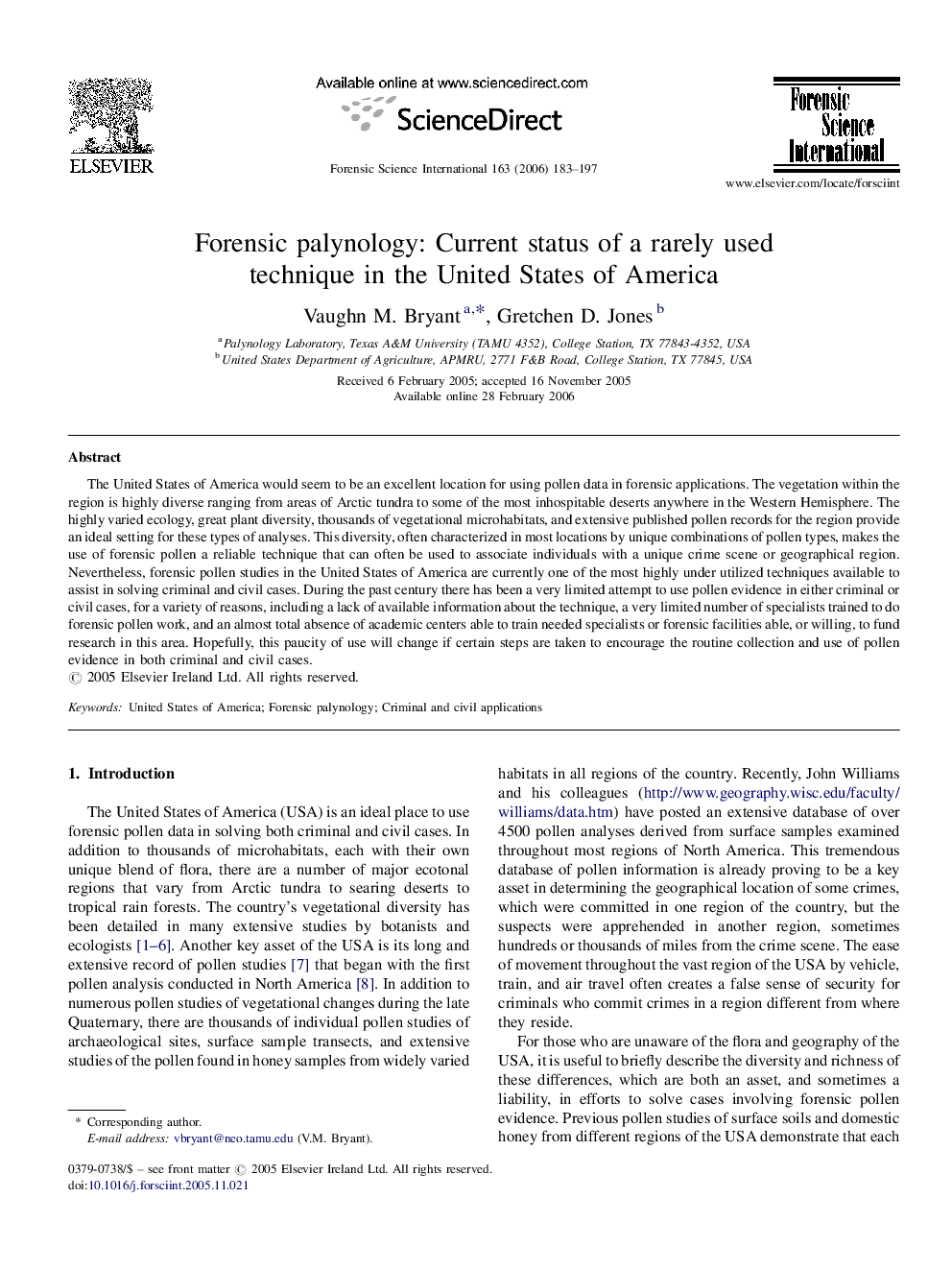| کد مقاله | کد نشریه | سال انتشار | مقاله انگلیسی | نسخه تمام متن |
|---|---|---|---|---|
| 98542 | 160545 | 2006 | 15 صفحه PDF | دانلود رایگان |

The United States of America would seem to be an excellent location for using pollen data in forensic applications. The vegetation within the region is highly diverse ranging from areas of Arctic tundra to some of the most inhospitable deserts anywhere in the Western Hemisphere. The highly varied ecology, great plant diversity, thousands of vegetational microhabitats, and extensive published pollen records for the region provide an ideal setting for these types of analyses. This diversity, often characterized in most locations by unique combinations of pollen types, makes the use of forensic pollen a reliable technique that can often be used to associate individuals with a unique crime scene or geographical region. Nevertheless, forensic pollen studies in the United States of America are currently one of the most highly under utilized techniques available to assist in solving criminal and civil cases. During the past century there has been a very limited attempt to use pollen evidence in either criminal or civil cases, for a variety of reasons, including a lack of available information about the technique, a very limited number of specialists trained to do forensic pollen work, and an almost total absence of academic centers able to train needed specialists or forensic facilities able, or willing, to fund research in this area. Hopefully, this paucity of use will change if certain steps are taken to encourage the routine collection and use of pollen evidence in both criminal and civil cases.
Journal: Forensic Science International - Volume 163, Issue 3, 22 November 2006, Pages 183–197